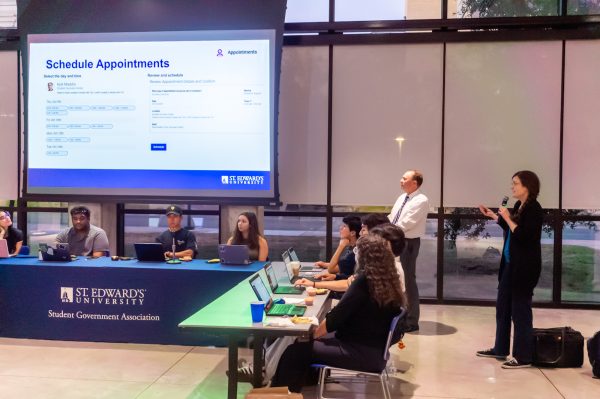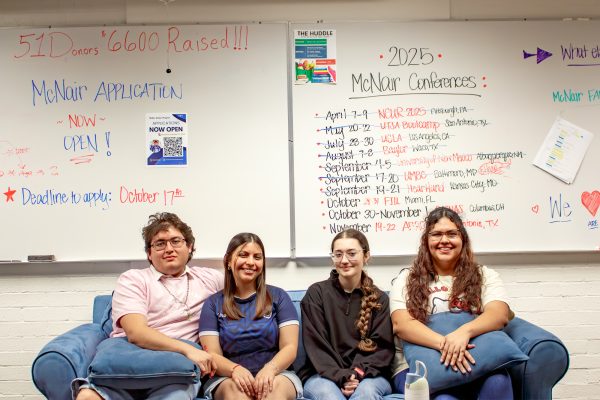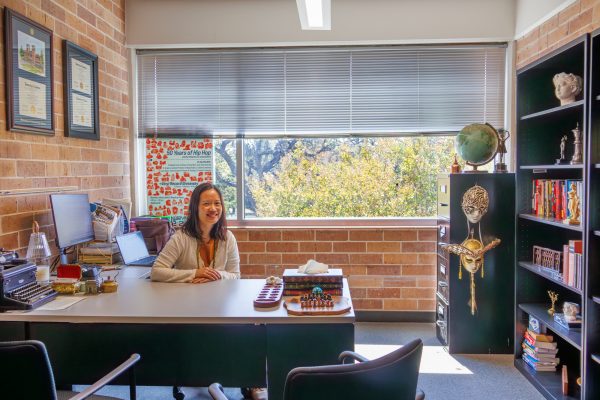8Marketing (DO NOT RUN)
With the recent growth of the school WHAT GROWTH? THIS IS VAGUE ALSO SOUNDS LIKE A WART, St. Edward’s University has been increasing its marketing campaign in hopes of attracting interested applicants and emphasizing special programs, such as those in study abroad.
As a part of these efforts, the St. Edward’s Marketing Department is using student photos in advertisements on and around campus to advertise these special programs. Additionally, as the university pushes DOES THE UNIVERSITY REALLY PUSH TO DO THIS? I THOUGHT MARKETING IS IN CHARGE OF MARKETING to advertise its global awareness more, Marketing is now using student photography by students studying abroad to advertise.
“One of the reasons we’re using student photography is because more and more students are studying abroad and study abroad global educational opportunities and new partner campuses in other countries are a huge part of the university’s strategic plan and our job is to communicate that and illustrate that and show that in action,” Director of Communications Mischelle Diaz said.
However, the use of student photography has led to conflicts of consent over whether Marketing is allowed to use student photos in certain situations. To deal with this problem, Marketing is drafting a new release form targeted towards gaining consent from student photographers abroad to use their photos.
“[The new form] is a release form that we will have students sign when they provide to us their own photos. We have not had that type of release form in the past simply because we haven’t in the past really used student photography in the way we’re using that now,” Diaz said.
The decision to tighten up consent guidelines for use of student photography came after a surprised student saw herself in a poster around campus touting the study abroad program, Diaz said. The student complained, saying she never agreed to be photographed for the purposes of the advertisement, Diaz said.
The student involved in the conflict did not comment.
The posters were part of an advertising campaign put on by St. Edward’s Marketing for the university’s recent push for more students to be involved in study abroad, according to Diaz and Paige Booth, the supervisor of St. Edward’s Marketing.
Booth would not provide information concerning the amount of funding that SEU uses on advertising campaigns each year, but did confirm that Marketing and the Office of International Education often work together to create concepts for advertising study abroad programs.
The student’s photo was included in a stack of photos taken by another student who had been traveling abroad during the summer. Those photos were intended for use in a St. Edward’s Magazine article, with the photographer’s consent, Diaz said.
“Usually students are happy and excited to see themselves in posters around campus. I was very surprised she was so upset,” Diaz said.
The Marketing Department has release forms for students to sign for when they photograph them for a publication, Diaz said.
“We’ve always had a release form for when we are taking someone’s photo. We take your photo at an event or for a story and you would have to sign [the form] and it would explain to you that this photo we’ve taken of you we are going to use for unlimited marketing purposes,” Diaz said. “Even when our staff photographer is just kind of walking around and maybe will snap a few photos for an event, she will have those with her.”
However, this consent form was in use before the recent practice of using student photography.
“We only recently started using photos taken by students in the past six to nine months,” Diaz said.
Diaz said that a new form is currently being written to include consent on behalf of the photographer for St. Edward’s Marketing to be able to publish the photos.
“We’ve had to rapidly change our practices in recent weeks because of this issue,” she said.
This new form allows St. Edward’s Marketing to publish, copy, exhibit or distribute any photographs provided by a student for the purposes of advertising the university and its programs, according to the form itself. While it asks for consent from the photographer, it does not ask for consent from the subject being photographed.
“The person who takes the photo and gives us the photos would be the person signing the release form,” Diaz said.
“I think each situation is going to be different but I think as a marketing office the best that we can do is have them sign the release form and be as diligent as clear and careful as possible in communicating how the photos are going to be used and thinking about those possible pitfalls. And talking to the person who is giving us the photos to try to mitigate some of those situations,” Diaz said.
Diaz said she and St. Edward’s Marketing are still revising the new Authorization and Release Form and are hoping to better establish rights for students and student photographers and may possibly require free-lance photographers to distribute consent forms to those whom they photograph.
“We are hoping to protect both our photographers and ourselves from incidents like the one that recently occurred,” said Diaz.
The posters were taken down and St. Edward’s Marketing met all of the student’s demands concerning the posters. Yet, the Marketing Department is still considering how to deal with the problem of consent, not only that of students in the photographs, but the creative rights as held by student photographers.
“Students have been very gracious in letting us use their photos. The way that we’re doing marketing is changing and we have the need to use these students photos and students most of the time are very happy to share those photos for us to use them but this release form will obviously safe-proof any misunderstanding,” Diaz said.





